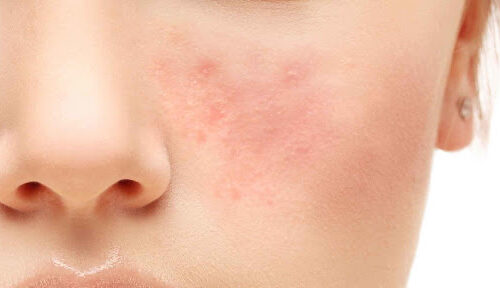
How to Pass 2019 Drug Tests at Work
If you know how long alcohol stays in your system, you will be able to prevent physical and mental impairments and you will know also how to avoid unsafe interactions with medications. There is no single factor that determines detection time or the eradication time of alcohol in your system.If you want to learn how you caneasily pass your hair follicle drug test with flying colors, then you need to know the time range for alcohol detection in your system.
Detection Periods
To determine the length of time alcohol is evident in the body will depend on several factors including the type of drug test that is being used. Although the detection time for alcohol will be a shorter time with some tests, it can be detected for up to 3 months with other tests.
Let’s look at the detection windows or the estimated time range for alcohol detection by several testing procedures:
- Breath: When a breathalyzer test is used, alcohol can show up in your breath for up to 24 hours.
- Blood: A Blood test will show alcohol in your system up to 24 hours
- Hair: A hair follicle test will pick up alcohol for 3 months or 90 days
- Saliva: Alcohol will show a positive in 24 to 48 hours
- Urine: When ethyl glucuronide (ETG) metabolite is used detection time for alcohol in the urine is 3 to 5 days or ten to twelve hours with the traditional approach is used
Other factors that determine alcohol detection in the body include a person’s metabolism, age, body mass, health conditions, hydration level, and physical activity among others. These factors at times will make it make it practically impossible to verify the exact time that alcohol can be detected during a drug test.URL: https://www.ncbi.nlm.nih.gov/pmc/articles/PMC4080811/
How the body absorbs Alcohol
Alcohol levels accumulate in your system because it is quickly absorbed in the body of most persons. For example, if you weigh 150 pounds, one regular drink will raise your blood-alcohol concentration (BAC) 0.02% roughly, but your body cannot remove more than 0.016% per hour. Therefore, if every hour you drink only one drink, your BAC will keep rising. Having more than one drink per hour will cause it to rise more quickly.
There are many variables that affect the speed at which your body absorbs alcohol. These variables include your body weight, amount of water in your body, the amount of food you consumed before you started drinking. Gender is also a factor since women are likely to absorb alcohol much faster than men.
How to RemoveAlcohol from Your Body
Alcohol is broken down in the body by the oxidizationof ethanolto acetaldehyde to acetic acid to carbon dioxide and water. Approximately 5% of the alcohol you consume is eliminated by the body via breath, sweat, saliva, urine and feces.
Most of the alcohol you consume, however, is processed in the liver, but the liver can only process a limited amount of alcohol each hour. Alcohol is broken down by the liver at 0.016% on average per hour and that is less than one drink. The size of your liver and how it is functioning also affects the speed of absorption. Additionally, the enzyme systems’ genetic variations also absorb alcohol.
You Can’t Speed up the Process
It doesn’t matter how quickly alcohol is absorbed by your body because the fix rate for “burning off’ is 0.016 BAC each hour. Therefore, you cannot do anything to accelerate the process neither drinking water, drinking coffee, vomiting nor taking a shower.
So, if you if you have an impending urine, breath or blood test for detecting alcohol in your body, your best option to lessen your blood-alcohol content is to defer the test as long as you can. Why is this necessary? Only time can lower your BAC.
The alcohol absorption rate for the average person with a healthy liver is short when compared to that of a heavy drinker or a long-time drinker. It will take a longer time to get rid of alcohol in the body of the heavy drinker.
Factors Affecting the Absorption of Alcohol
Here are some other factors that affect the speed at which your body can get rid of alcohol in your system.
- Age
- Body fat content
- Ethnicity
- Genetic sex
- The amount of fat in the food you consumed
- The amount of food you ate before or while drinking.
- How quickly you drank the alcohol
- Medications
Binge Drinking and Blood Alcohol Testing
If you are a male and you have five and more drinks in one session, you’re a binge. A female binge drinker consumes four or more drinks in one session. Consequently, engaging in binge drinking will cause alcohol to stay in your system for several hours.
The reality is, if you engage in binge drinking, you could possibly fail a blood or urine drug test the next morning. This most definitely could prevent you from passing a drug test intended for detecting alcohol in your body.
Hair Alcohol Testing
You may be asked to do a hair alcohol test to determine if you drank alcohol over a specific time period. A hair alcohol test examines the Fatty Acid Ethyl Esters and Ethyl Glucuronide markers in your hair. These hair testmarkers are very accurate in detecting the presence of alcohol consumption. Read more here.
Both FAEE and ETG are precise markers of consumption of alcohol. These areproduced only when alcohol is consumed by you or if your blood alcohol levels have increased. These get into your hair through sweat and dispersion and infect every inch of your hair. For example, if over a five months period you never drank and suddenly began to drink excessively for just one month, the FAEE and ETG would be detectible throughout every strand of your hair.
The ETG markers can detect any adjustment in alcohol consumption patterns of alcohol. This is the most dependable hair test that can verify alcohol consumption levels, while the FAEE test can detect alcohol consumption level for an extended time period. However, it is recommended that hair test for alcohol should be done along with other tests such as blood tests to ensure accuracy.


